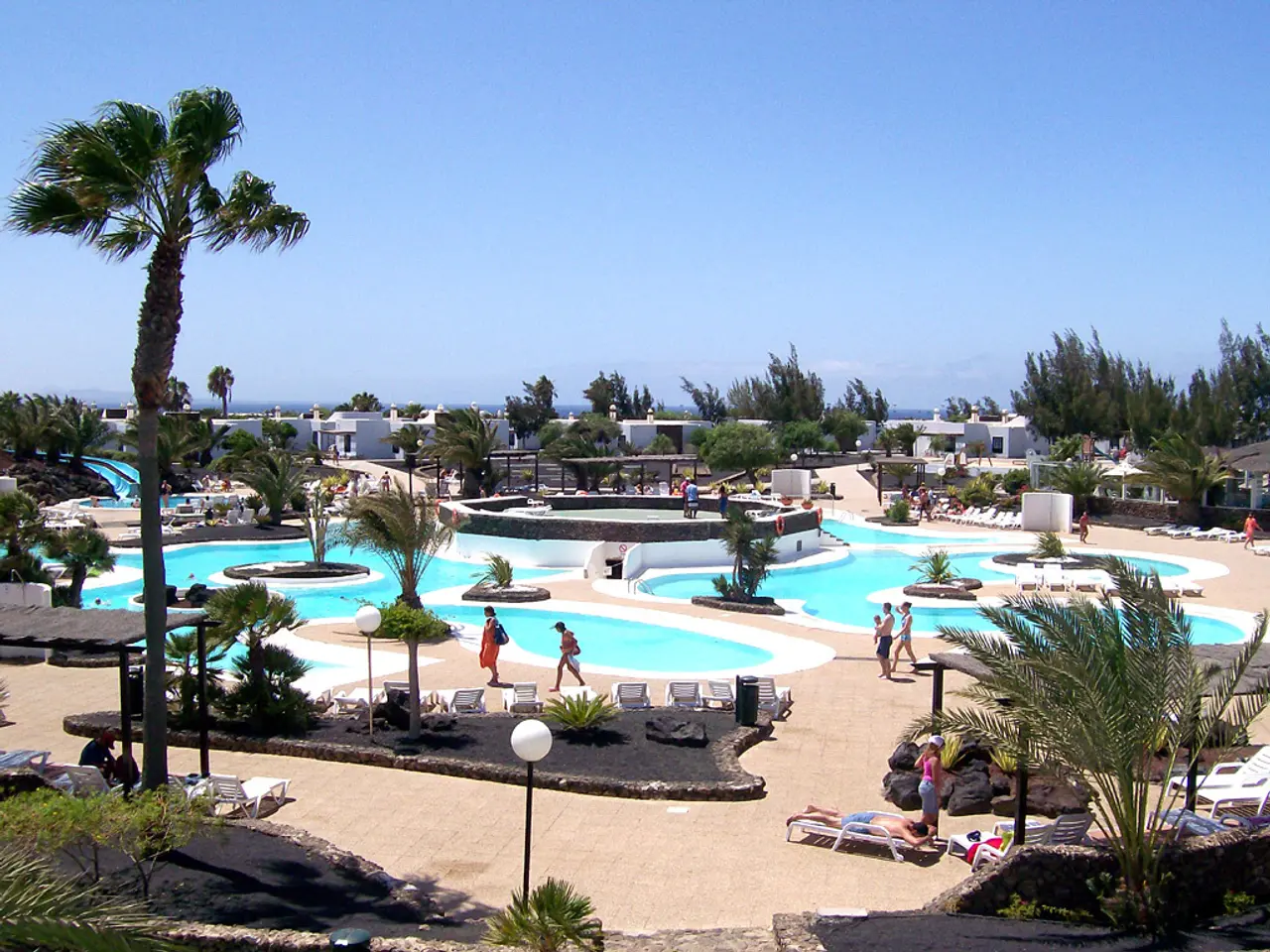Luxurious Jumeirah Muscat Bay stands out as one of the most remarkable resorts in the city of Muscat.
Nestled along the coast of the Arabian Sea, Muscat, the capital of Oman, offers a unique blend of modern luxury and ancient charm. Here's a glimpse into the city's rich tapestry, as experienced by travellers.
The Chedi, a luxury hotel located in Muscat, invites guests to indulge in an opulent breakfast in a palm-shaded courtyard overlooking the sea. The hotel's serene ambiance sets the tone for a day of exploration.
Muscat's cultural heartbeat can be found in the Royal Opera House, which opened its doors in 2011 during the reign of Sultan Qaboos. This architectural marvel, known for its neo-Islamic design, regularly hosts performances by local and international opera, circus, theatre, and dance troupes.
A stone's throw away from the Royal Opera House lies the Al Alam Palace, a ceremonial seat of the Sultan of Oman. The palace, located in Old Muscat, boasts pharaonic gold and blue columns, adding a touch of grandeur to the city's skyline.
History buffs will find solace at the Oman National Museum, which opened in 2016 and is situated near the Al Alam Palace. The museum offers a comprehensive insight into Oman's past, showcasing traditional clothing, model dhows, and old currency. The Aflaj Gallery, housed within the museum, highlights Oman's historic and World Heritage-listed water management systems.
Muttrah, the old heart of Muscat, is a historic district teeming with life. Originally a fishing village, its seafaring spirit can still be found in the modern fish market at the western end of the corniche. The district is also home to Muttrah Souk, a maze of shops selling gold, wedding chests, and more.
For a panoramic view of the rugged coastline, visitors can ascend Muttrah Fort, a 16th-century fortress built by the Portuguese.
Jumeirah Muscat Bay, one of Muscat's finest resorts, is located further south-east from the Oman National Museum. The resort's Peridot restaurant offers a taste of Omani cuisine, including the traditional dish, shuwa.
For a more authentic culinary experience, Oman Express, a hole-in-the-wall café off Souq Ruwi Street, serves lunch as the Indian expat population does, with steaming masala chai and bottomless thalis.
Ruwi, known as Little India, is a district in Muscat packed with souks and jewellery stores. The area is also home to the Ruwi Clock Tower, a nearby landmark with a pleasant park at its base.
Marina Bandar al Rowdha serves as a jumping-off point for boat trips around Muscat's coastline. The most picturesque time for these trips is during early evening, when the sun sets, and dolphins are known to playfully dip alongside boats. An unbeatably atmospheric choice for such a cruise is a traditional wooden dhow like the Star of the Sea.
The Sultan Qaboos Grand Mosque, one of the most beautiful buildings in the Gulf, is open to non-Muslims every morning except Fridays. Its most striking feature is a vast Persian carpet, hand-stitched in Iran and weighing 21 tonnes.
This travel report on Muscat, as experienced by travellers, was supported by the institution Outback Africa Erlebnisreisen in collaboration with a local safari partner. Whether you're seeking luxury, history, culture, or adventure, Muscat promises an unforgettable experience.
Read also:
- Peptide YY (PYY): Exploring its Role in Appetite Suppression, Intestinal Health, and Cognitive Links
- Toddler Health: Rotavirus Signs, Origins, and Potential Complications
- Digestive issues and heart discomfort: Root causes and associated health conditions
- House Infernos: Deadly Hazards Surpassing the Flames








